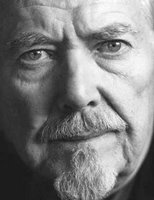
The
D&AD Branding Forum took place on 09 November 2006. The speakers were Jon Edge, Director, Edgey - Dana Robertson, Creative Director,
Identica - Paul Hammersley, Partner,
The Red Brick Road - Glenn Tutssel, Executive Creative Director,
Enterprise IG.
Each speaker was given 10 mins to discuss Branding over the past 25 years and they all chose to highlight their Hero brands (Apple featured on more than one list). Jon Edge rattled through 200 slides, Glenn Tutssel concentrated on the tv advertising by the big brands like Guinness, and Dana Robertson touched upon the rise of the 'lunchtime brands' like
Google and
MySpace. But I was particularly impressed by Paul Hammersley. Whilst the younger speakers tried too hard to make a splash, his more stratgic view, delivered by 'the accounts guy', was measured and knowledgeable. He simply knew the subject, and I was hooked.
Paul's principle point was in making a distinction between a Brand Positioning, and a Brand taking a Position. A Positioning is relative i.e. 'we are going to make this product the cheapest on the market'. However the more successful brands take a Position, one that ignores the trends and the competition to create an emotional resonance with the customer.
Innocent drinks is an example of a brand that has very clearly taken a Position and which it communicates through all the different touchpoints, from packaging and advertising to cultural behaviours.
A lesson that you don't need to shout, it's just what you say.
PS In the Q&As, someone made an interesting point about the absence of any of the tobacco brands in any of the presentations -
Silk Cut, or
Benson and Hedges would have made most top Brand lists 20 years ago. A Brand is of course owned by the customer, not the company, and social or political events will have the ultimate say on a Brand's longevity. I quietly applauded myself.




